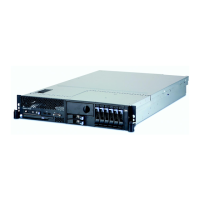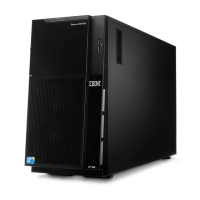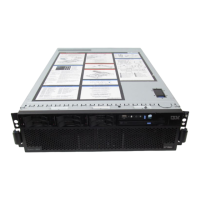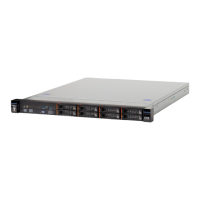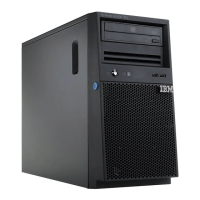Cabling your server
Learn how to cable your server or workstation.
If you are installing a new server and have not created a customized setup checklist, see Creating a
customized initial server setup checklist. The initial server setup checklist provides an end-to-end setup
checklist for you to use throughout the entire initial server setup of your server. The checklist is intended
to ensure that the system is capable of starting and that it is functional before you perform more complex
and custom configurations. For more information, see Initial server setup.
To learn more about the consoles available for your server, see the following descriptions. Then, for more
information, see Planning for consoles, interfaces, and terminals.
Advanced System Management Interface
The Advanced System Management Interface (ASMI) is the interface to the service processor that
allows you to perform general and administrator-level service tasks such as reading service
processor error logs, reading vital product data, setting up the service processor, and controlling
the system power. The ASMI may also be referred to as the service processor menus. Set up
access to the ASMI if you plan to manage the IBM
®
AIX
®
, Linux
®
, or i5/OS
®
operating systems
without an HMC.
Hardware Management Console
The Hardware Management Console (HMC) is a dedicated workstation that runs integrated
system management software. The HMC manages hardware tasks and configures logical
partitions on managed systems. It also acts as a focal point for hardware detection and reporting.
Operations Console (for IBM System i5
™
and eServer
™
i5 models only)
Operations Console allows you to use one or more PCs to access and control, either remotely or
locally, the server console and control panel functions. Set up Operations Console if you plan to
manage the i5/OS operating system in a partitioned environment or if you plan to manage a
server with the i5/OS operating system in a nonpartitioned environment. If you plan to manage
a server with i5/OS in a nonpartitioned environment, you must also set up access to the ASMI to
communicate with the service processor.
Twinaxial Console (for IBM System i5 and eServer i5 models only)
The twinaxial console uses a basic command-line interface to access and manage the server, and it
does not require the use of a PC to act as a console. Set up the twinaxial console if you plan to
manage the i5/OS operating system in a partitioned environment or if you plan to manage a
server with the i5/OS operating system in a nonpartitioned environment. If you plan to manage
a server with i5/OS in a nonpartitioned environment, you must also set up access to the ASMI to
communicate with the service processor.
Thin Console for System i5
™
(for IBM System i5 and eServer i5 models only)
The Thin Console provides a 5250 emulation session as a console for an i5/OS logical partition
only for select models that are not managed by a Hardware Management Console (HMC).
Additional hardware support is not required because it connects to the model directly using one
of the HMC ports and is configured in i5/OS as an HMC using all virtual resources. This console
device is not supported on an Ethernet network even if the model is already connected. A cable
must connect this device directly to the HMC port (either HMC1 or HMC2) on the server, and no
other console device can be attached to the remaining HMC port. This console device is
supported on the following IBM System i5 and eServer i5 models: 9405-520, 9406-520, and
9406-550.
© Copyright IBM Corp. 2004, 2006 1

